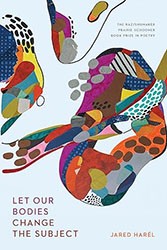While, for many, letter writing has by now been replaced by faster, more efficient, and trendier modes of communication, there was a time when handwritten correspondence was a driving force in social, economic, and cultural daily life. This was especially true for transient, largely literate populations, like the emigrating Eastern European Jews of the late nineteenth and early twentieth centuries, who often remained tied to the families, lovers, friends, and acquaintances that they left behind. Two recent books,Alice Nakhimovsky’s and Roberta Newman’s Dear Mendl, Dear Reyzl and Liana Finck’s A Bintel Brief — explore the Jewish past via letters that reflect connections and collisions between old and new worlds. Through their very different looks at the art of correspondence, these books remind us that paper archives continue to be relevant sources of historical and literary knowledge and inspiration, even in this digital age.
Nakhimovsky and Newman preface their academic book by discussing the power of letters in both the personal and professional lives of Eastern European and American Jews of the late nineteenth and early twentieth centuries. The focus of Dear Mendl, Dear Reyzl: Yiddish Letter Manuals from Russia and America is the brivnshteler, “an anthology of letters for business and private correspondence” that was popular at the time. The authors contextualize these manuals first, offering readers a history of their rise alongside a more general “upsurge in Yiddish publishing” toward the end of the nineteenth century. They also describe the ways the manuals were used to help fill the gap between secular and religious education, and how the content of the manuals reflects economic and cultural shifts in the Jewish populations that were using them. The second half of the book includes excerpts of brivnshteler letters organized into distinct and helpful categories like “Modernity and Mobility,” “Courtship and Marriage: America,” “Business,” and “Judaism and Jewish Identity.” As the authors explain, the central paradox of reading through and analyzing such documents is that even though they were meant primarily as pedagogical tools, people did not necessarily use them in real life — perhaps because they were “all too aware that their correspondents might have the very same brivnshteler sitting on their own bookshelves.” Nevertheless, these manuals provide us with a lens to better understand Jewish life at the time, as they mirror many of the challenges and concerns that Russian and American Jews were experiencing, and as they resonate with the emotional registers found in Yiddish literature and letters more generally.
Liana Finck’s A Bintel Brief: Love and Longing in Old New York is also a book that employs, at its foundation, documents from a bygone Jewish paper archive. Bintel Brief was a long-running advice column published in The Forward and created by the celebrated editor of that paper, Abraham Cahan. In her book, Finck, a cartoonist, transforms selected letters from A Bintel Brief that have been translated into English and into beautifully rendered comics. Through her sometimes dreamlike drawings, which vary in style depending on the letter, she brings to life the cast of characters within this “bundle of letters,” who look to their “learned mister editor” for advice on how to deal with transitions and hardships in the new world. One writer, who left his home after his family was devastated by a pogrom, wonders what to do with the religious father he left behind, whom he just cannot “really picture… in the promised land.” Another couple asks advice about whether or not to adopt a child, given the possibility that “the father could have been… a nogoodnik” and the mother might want the child back eventually. Finck interweaves these moving, often distressing stories from the past with a fantastical narrative in which a young woman from the present finds the letters and reads through them with the help of a ghostly Abraham Cahan. In Finck’s A Bintel Brief, the stagnant paper archive is revived as past and present, word and image, letter writer and letter reader collide on the page.
Related Content:
- Reading List: Yiddish Literature
- Reading List: Moving to America: Immigrant Tales
- The Rise of Abraham Cahan by Seth Lipsky
- A Living Lens: Photographs of Jewish Life from the Pages of The Forward by Alana Newhouse
Additional Title Featured in Review
Read Liana Finck’s Visiting Scribe Posts
Tahneer Oksman is a writer, teacher, and scholar. She is the author of “How Come Boys Get to Keep Their Noses?”: Women and Jewish American Identity in Contemporary Graphic Memoirs (Columbia University Press, 2016), and the co-editor of The Comics of Julie Doucet and Gabrielle Bell: A Place Inside Yourself (University Press of Mississippi, 2019), which won the 2020 Comics Studies Society (CSS) Prize for Best Edited Collection. She is also co-editor of a multi-disciplinary Special Issue of Shofar: an Interdisciplinary Journal of Jewish Studies, titled “What’s Jewish About Death?” (March 2021). For more of her writing, you can visit tahneeroksman.com.



